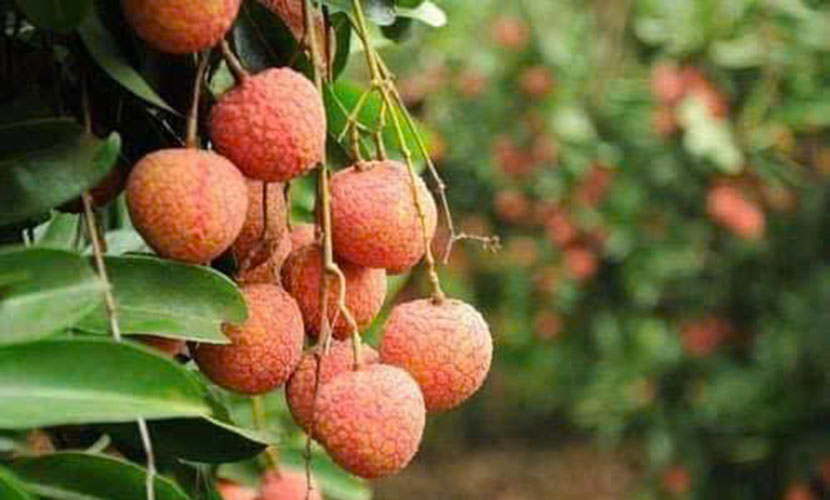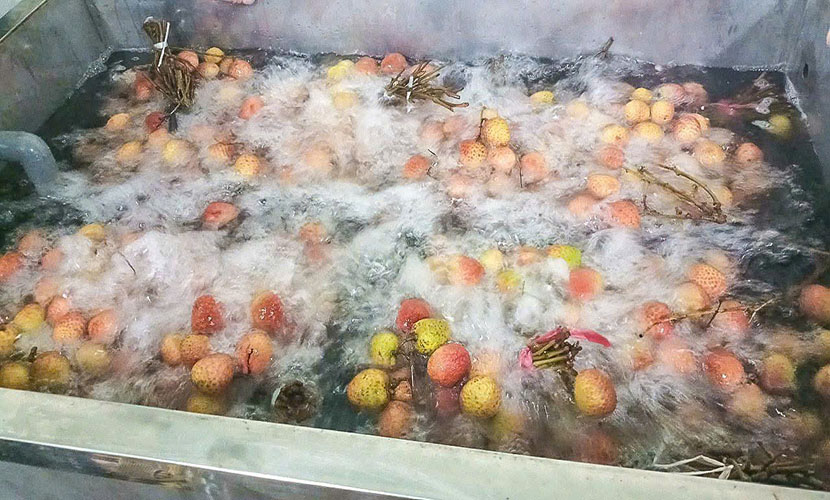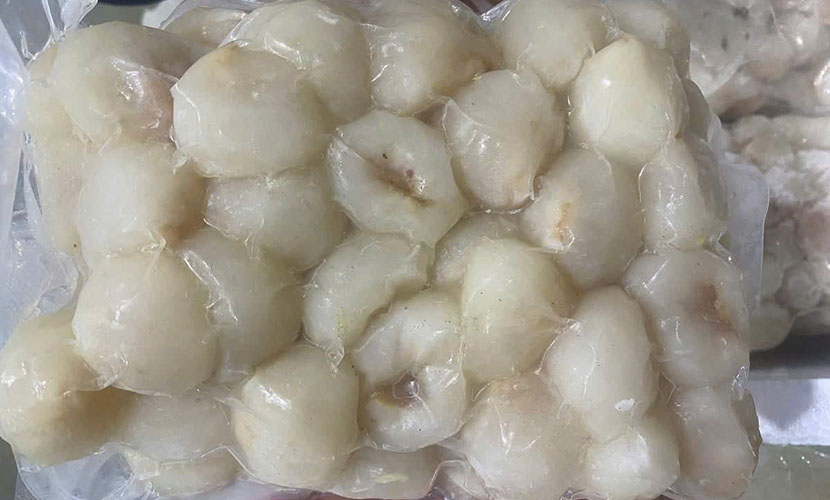
The season of Vietnamese lychees lasts only two months. Thanks to early trade promotion efforts both domestically and internationally, Vietnamese lychees are seeing promising export opportunities. Accordingly, they bring positive signals for both growers and export businesses.
On May 29th, an early-season shipment of 3.7 tons of Globalgap lychees arrived at an airport in Japan. This marks the result of efforts by localities and businesses to expand export markets early in the season.

Vietnamese lychees
The import company in Japan was Senkyu Joint Stock Company (Tokyo). They imported and distributed through supermarkets, specialty stores, and Vietnamese communities in Japan. Vietnamese lychees would officially go on sale from May 30th. Moreover, they committed to expand the distribution network to ensure a continuous supply throughout the season.
Exporting to Japan requires lychees to undergo a Methyl Bromide fumigation process at a minimum dosage of 32g/m³ for two hours at facilities certified by Japan and Vietnam. Currently, there are three Vietnamese treatment facilities that meet these requirements..
According to the export company, they signed contracts totaling over 1,000 tons of Thanh Ha lychees with international partners. The Chairman of this company shared that they are expanding to demanding markets. Meanwhile, his company is investing heavily in processing technology and quality control in accordance with international standards.
According to him, the entire process, from cultivation and harvesting to packaging, must follow strict protocols. The lychees must reach optimal ripeness, be free of pests and diseases, have stems that meet regulatory standards. In addition, they should pass pesticide residue checks conducted 7–8 days before harvesting.

Washing Vietnamese lychees for export
Although fresh Vietnamese lychees are now present in over 20 countries, China still accounts for about 90% of total exports. Both parties agreed to promote agricultural trade by establishing a “green lane” for fresh produce and extending customs clearance hours during peak harvest season.
While exports are showing positive signs, the domestic market is also vibrant. Domestic market is expected to consume more than 60% of the total production of fresh lychee. Key distribution channels include wholesale markets in major cities and modern retail systems.
Central Retail Vietnam stated that the company will boost lychee sales through both online and offline channels. Vietnam’s lychee will be prominently displayed at Go!, Tops Market, and mini Go! supermarkets, accompanied by attractive promotional programs.
Central Retail plans to consume about 1,000 tons of lychees this season, double last year’s figure. The Saigon Co.op system also targets more than 500 tons in sales, an increase of about 20% compared to 2024.

Frozen lychees from Vietnam
According to an estimate, Vietnamese lychees will reach around 303,000 tons in 2025. This volume went up more than 30% from last year. Thee quarantine units have been available with personnel and equipment in the production areas during the season.
In Bac Giang and Hai Duong are Vietnam’s two key lychee-growing provinces. They have implemented numerous trade promotion programs for Vietnam’s lychee exports. Current farm-gate prices are at 40,000 VND/kg, 15–20% higher than the same period last year.
As of now, Vietnam has issued 469 planting area codes covering nearly 19,400 hectares. At the same time, Vietnam has also issued 55 packaging facility codes for export to major markets. With coordinated efforts from ministries, enterprises, and local authorities, this year’s lychee season is entering its harvest phase with a “dual hope”: a bumper crop and good prices.
Vietnamese source: https://thuonghieusanpham.vn/lo-vai-thieu-dau-mua-sang-nhat-mo-dau-mua-vu-voi-ky-vong-lon-79934.html
